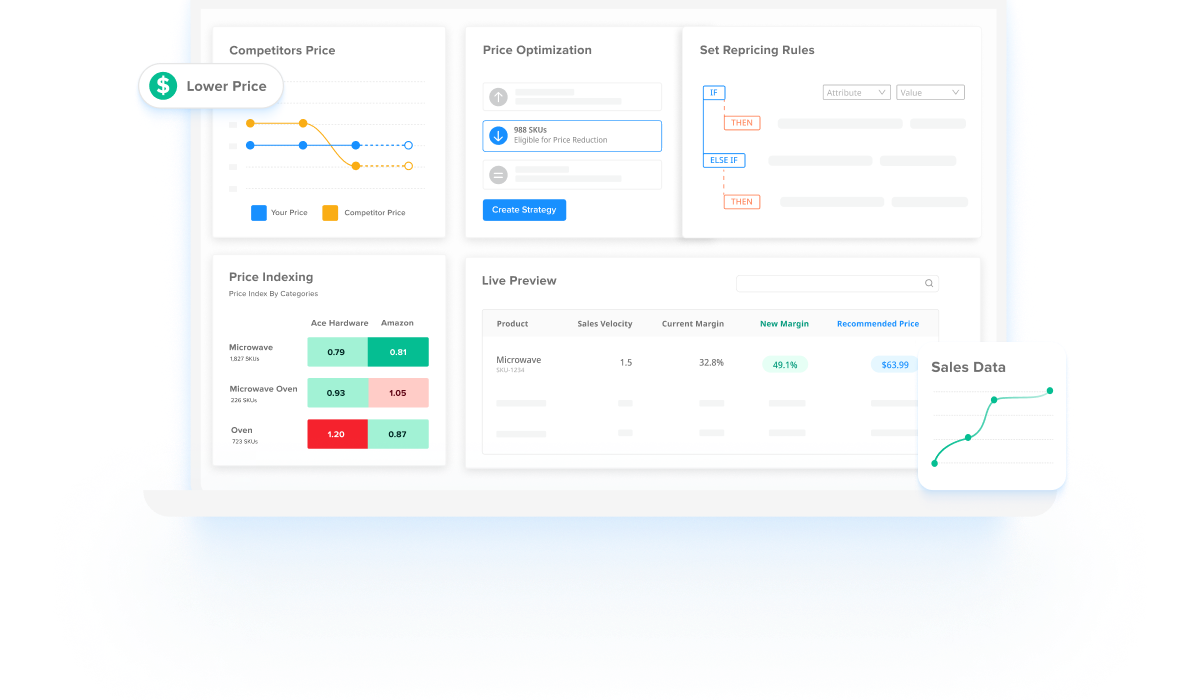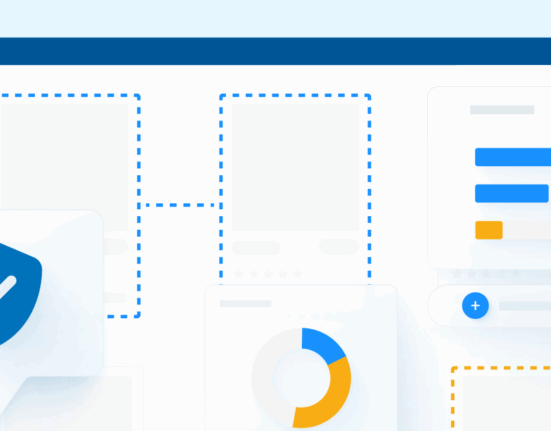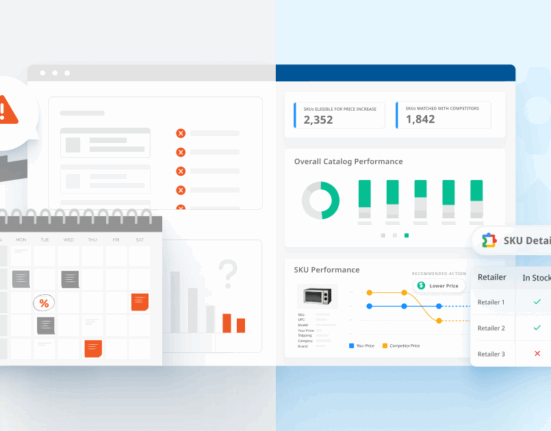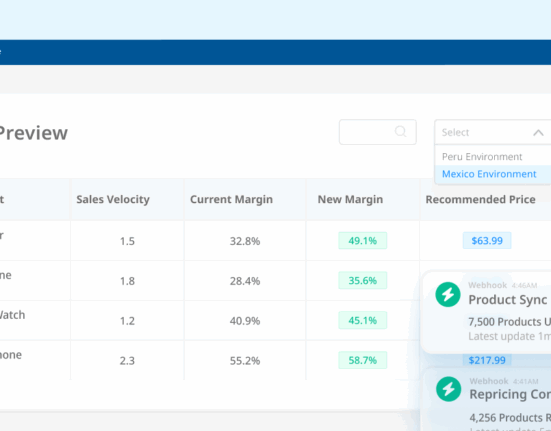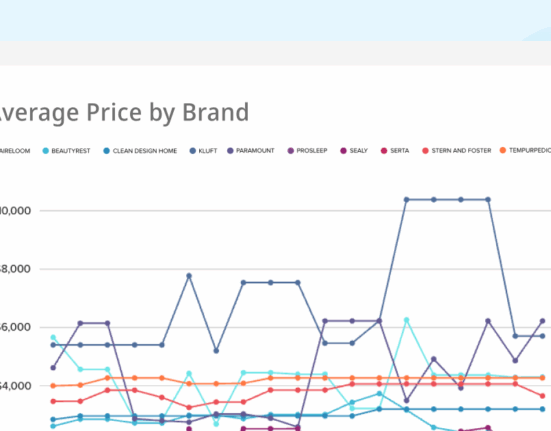In the world of ecommerce, staying ahead isn’t just a matter of having the right products—it’s about ensuring your prices are always competitive. For online brands and retailers, price monitoring and competitive price tracking tools have become indispensable. But with a wide array of options available, each with different features and capabilities, choosing the right one for your business can be challenging.
This guide will walk you through the various levels of price monitoring tools, helping you understand which might be the best fit for your company, whether you’re running a growing brand or managing a large, complex ecommerce operation.
Basic Price Monitoring Tools: A Simple Start
For businesses just beginning to explore the benefits of price monitoring, basic tools offer an excellent starting point. These entry-level solutions are designed with simplicity in mind, catering primarily to small to medium-sized businesses that need to track a few competitors and products without breaking the bank.
These tools typically allow you to monitor competitors’ prices on a basic level, helping you stay informed about market trends. For instance, if you’re selling on popular marketplaces or your website, a basic tool can alert you when a competitor drops their price, enabling you to respond quickly. However, it’s important to note that many of these tools require manual data entry—meaning you’ll have to input competitor URLs and other information yourself. This can be time-consuming and somewhat limited in scope.
The simplicity of basic tools makes them best suited for small businesses with a limited number of products or competitors. If you’re running a boutique online store or managing pricing for a niche market, a basic price monitoring tool might be all you need to keep an eye on the competition and make informed pricing decisions.
That said, these tools come with limitations. The manual nature of data entry and tracking means they may not scale well as your business grows. Additionally, the analytics and reporting features tend to be quite basic, providing only a high-level view of pricing trends. However, for many smaller retailers, the cost-effectiveness and ease of use make basic tools an attractive option.
Key Features:
- Price Tracking: Monitor your competitors’ prices on a basic level. Typically, this involves tracking prices on a small number of competitor sites or marketplaces.
- Manual Data Entry: Many of these tools require manual input of URLs and competitor information.
- Basic Alerts: Receive alerts when a competitor changes their prices or when prices hit a certain threshold.
Best For:
- Small businesses with limited budgets.
- Retailers managing a smaller product catalog with a few key competitors.
- Companies that are new to price monitoring and need to test the waters before committing to more advanced solutions.
Limitations:
- Limited automation: Much of the process may still require manual work.
- Narrow scope: Often limited in the number of competitors or products that can be tracked.
- Basic analytics: Reports and data analysis capabilities are often quite limited.
Intermediate Price Monitoring Tools: Scaling Up Your Efforts
As your business grows and your competitive landscape becomes more complex, you’ll likely find that basic price monitoring tools no longer meet your needs. This is where intermediate tools come into play. These tools offer a more robust set of features designed to handle a larger volume of products and competitors, while also providing more automation and detailed analytics.
One of the standout features of intermediate tools is their automation of price tracking across a wider array of competitors and marketplaces. Instead of manually entering data, these tools can automatically pull in pricing information from multiple sources, freeing up your time to focus on strategy rather than data collection. Additionally, many of these tools offer dynamic pricing recommendations, which suggest price changes based on real-time competitor data, helping you stay competitive without the guesswork.
The enhanced reporting and analytics capabilities of intermediate tools are another significant advantage. These tools provide deeper insights into price trends, market positioning, and margin analysis, allowing you to make data-driven decisions that can boost your profitability. Moreover, integration capabilities with ecommerce platforms mean that price changes can be implemented more seamlessly, ensuring your pricing strategy is always in sync with your broader business objectives.
For medium-sized businesses—especially those with a larger product catalog or a more diverse set of competitors—intermediate price monitoring tools provide the perfect balance of functionality and cost. However, it’s important to recognize that these tools come with a steeper learning curve and may require more resources to manage effectively.
Key Features:
- Automated Price Tracking: Automatically track prices across a larger number of competitors and marketplaces.
- Dynamic Pricing Recommendations: Some tools offer dynamic pricing features that suggest price changes based on competitor behavior.
- Enhanced Reporting: Gain access to more detailed reports and analytics, including price trends, market positioning, and margin analysis.
- Integration Capabilities: These tools often integrate with ecommerce platforms, enabling real-time price updates.
Best For:
- Medium-sized businesses that need to scale their price monitoring efforts.
- Retailers with a larger product range and more competitors to monitor.
- Brands looking to optimize their pricing strategies with data-driven insights.
Limitations:
- Cost: Higher price point than basic tools.
- Complexity: May require more time and resources to set up and manage effectively.
- Learning Curve: The added features and capabilities can require more training and expertise to use effectively.
Advanced Price Monitoring Tools: The Powerhouses of Pricing
For large retailers and brands operating in highly competitive markets, advanced price monitoring tools offer the most sophisticated solutions. These tools are designed for businesses that need real-time data, artificial intelligence-driven insights, and comprehensive integration capabilities across various business systems.
Advanced tools go beyond basic tracking and provide real-time monitoring across hundreds of competitors and multiple channels, including international markets. This level of granularity is crucial for businesses that operate in global markets where prices fluctuate frequently and can vary widely across regions. Moreover, the artificial intelligence-driven analytics in these tools can predict market trends, forecast competitor pricing, and suggest optimal pricing strategies, giving you a significant edge in the market.
One of the key benefits of advanced tools is the ability to implement dynamic pricing strategies automatically. By leveraging real-time data, these tools can adjust prices based on competitor actions, inventory levels, and even customer behavior. This ensures that your pricing strategy is always optimized for maximum profitability.
Advanced tools are also built to integrate seamlessly with other enterprise-level systems, such as ERP and CRM platforms. This allows you to align your pricing strategy with other business operations, ensuring that all departments are working towards the same goals. Additionally, the customizable dashboards offered by these tools provide a high-level view of all key metrics, enabling you to monitor the performance of your pricing strategy in real-time.
However, with great power comes great responsibility—and a higher price tag. Advanced price monitoring tools are a significant investment, both in terms of cost and the resources required to manage them. They are best suited for large enterprises with the capacity to fully leverage their capabilities and the need for highly detailed and actionable pricing insights.
Key Features:
- AI-Driven Analytics: Use artificial intelligence to predict market trends, forecast competitor pricing, and optimize your pricing strategy.
- Real-Time Monitoring: Track prices in real-time across hundreds of competitors and multiple channels, including international markets.
- Dynamic Pricing Automation: Implement dynamic pricing strategies automatically based on real-time data, competitor pricing, and inventory levels.
- Advanced Integrations: Integrate with ERP, CRM, and other enterprise-level systems to ensure pricing strategies align with broader business objectives.
- Customizable Dashboards: Create highly customized dashboards that allow you to monitor key metrics and KPIs relevant to your business.
Best For:
- Large enterprises with extensive product lines and numerous competitors.
- Retailers operating in multiple markets who need to track prices across different currencies and regions.
- Brands with a focus on data-driven decision-making and advanced analytics.
Limitations:
- Higher Cost: These tools represent a significant investment.
- Resource Intensive: May require a dedicated team or third-party support to manage effectively.
- Complex Implementation: The setup process can be complex, requiring significant time and expertise.
Making the Right Choice for Your Business
Choosing the right price monitoring tool is about more than just picking the most feature-rich option—it’s about finding the tool that best fits your business’s current needs and future goals.
For small businesses just getting started, basic tools offer a low-cost entry point into the world of price monitoring, providing essential features without overwhelming complexity. As your business scales, intermediate tools offer the additional automation and analytics needed to stay competitive in a more crowded market. Finally, for large enterprises, advanced tools provide the AI-driven insights and real-time monitoring necessary to maintain a competitive edge in a dynamic, global market.
Ultimately, the right tool for your business will depend on your size, budget, and specific pricing strategy needs. By understanding the different levels of price monitoring tools, you can make an informed decision that will help you stay ahead of the competition and maximize your profitability.
